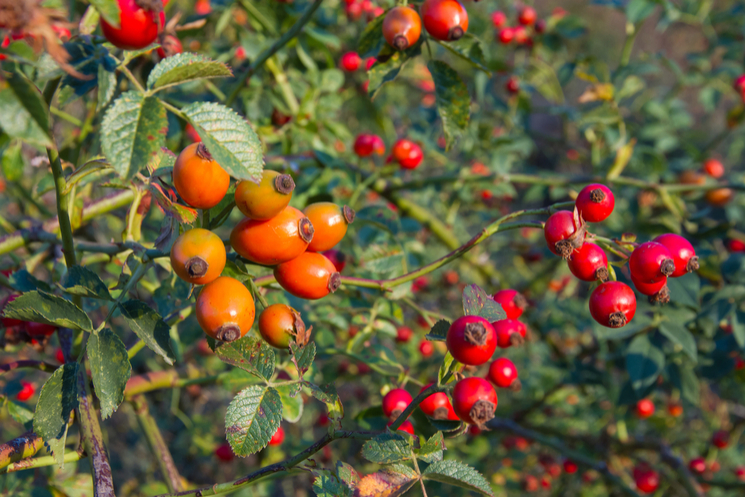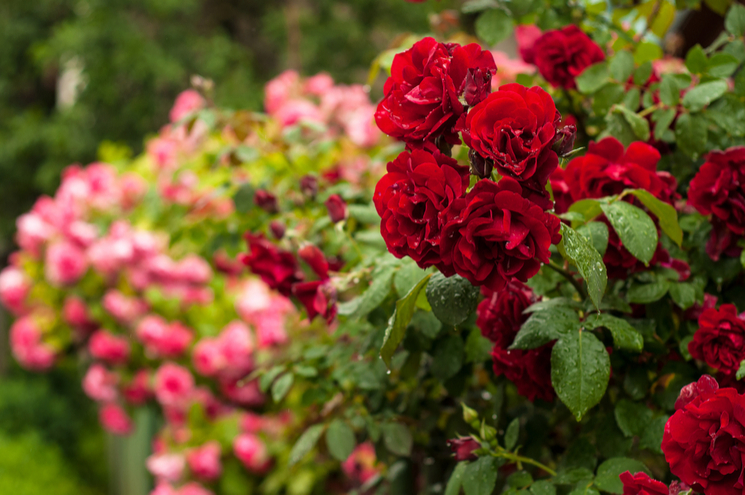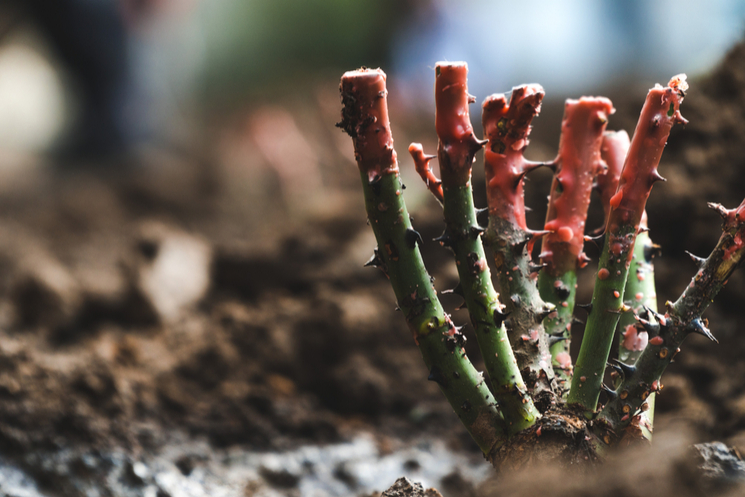For summer spectacle and scent it’s hard to beat roses, and few gardeners feel their plot is complete without at least one. The colour range is vast and with everything from rampant ramblers to dainty patio roses, there’s something to suit every size of garden.
While they may be the stars of summer, between November and March is the best time to plant. Bare root roses are not only cheaper than potted plants, they also establish more easily.
Choosing the best roses for your garden

The most important consideration when choosing a rose is what you want it to do. Some grow quickly to cover vast areas, while others are suitable for containers. Many roses repeat flower all summer while some varieties produce just one head-turning display.
If you want a rose to cover a building, a large expanse of fence or climb up into a tree, a rambler is ideal. Most only flower once, but they make a memorable sight. Do check the eventual size – ‘Kiftsgate’ roses are monsters that are only suitable for large gardens.
Climbing roses are the most subdued when it comes to their flowering habits, which usually repeat, providing a long display. They grow best against walls or fences, over arches and pergolas, or up obelisks in the middle of borders.
The tiniest roses are patio and miniature varieties, which are great for growing in containers on patios or balconies. There are even indoor varieties, which sit beautifully on a windowsill.
Low-growing ground cover roses grow horizontally rather than vertically, and are ideal for tricky spaces such as banks.
If you’re looking to add some height to your borders, this can be achieved with a standard rose. Standards are also perfect in a formal design or for edging a path.
There are even some roses that cope with a semi-shade or north-facing site, such as ‘For Your Eyes Only’ and some standard roses – though most roses prefer the sun.
Other considerations

Image: shutterstock
There are roses in almost every colour. Try ‘Rhapsody in Blue’ and ‘Blue for You’ for unusual, purple-blue flowers. Pale colours and white stand out at dusk while vibrant oranges and reds look great in hot borders.
Then there are the scented varieties. For me, scent is one of the most important elements, but even so I grow ‘Dublin Bay’ for its rich red colour even though it has no perfume.
Some roses have great foliage too. Rosa glauca has blue-grey leaves on dark stems while Rosa banksiae ‘Lutea’ has very glossy green foliage.
Common gardening advice is to deadhead roses regularly to get more flowers, but some varieties should be left to form hips to extend the display well into winter. Rugosa roses are among the best for fat red or orange hips and Rosa moyessii have eye-catching flagon shaped hips.
How to plant bare root roses
-

Prune top growth to 6 inches to encourage healthy roots
Image: shutterstock
Remove any bare root plants from packaging and plant as soon as possible, or put into a pot of moist compost. Don’t plant if the weather is frosty, and keep plants protected. - Soak the root ball for 30 minutes in a bucket of water before planting.
- Prepare the ground by removing any weeds and adding well-rotted manure or garden compost. Sprinkling mycorrhizal fungi into the hole and onto the roots helps the rose establish.
- If you are replacing roses and replanting in the same place, dig out the soil to around 30cm deep and to a width of 60cm and replace with fresh soil. This helps to prevent replant disease.
- Dig a hole big enough for the roots and plant deep enough to ensure the grafting point is below soil level. Firm in and water well.
- Prune all the top growth back to about six inches – it may seem harsh but helps promote good roots and, ultimately, the best performance.
Finally
The very best way to find the perfect rose is to see them growing. Make a date to visit one of the specialist nurseries or gardens that feature these beautiful flowers.
Lead image: shutterstock


